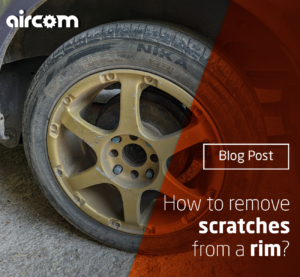Opony są jedynymi częściami samochodu, które podczas jazdy bezpośrednio stykają się z podłożem. W związku z tym w istotnym stopniu wpływają one m.in. na ekonomię podróży oraz bezpieczeństwo i wygodę kierowcy czy też jego pasażerów. W jaki sposób zatem sprawić, aby zachować wspomniane elementy w dobrym stanie możliwie jak najdłużej? O tym piszemy poniżej.

Tire life and pressure
The most elementary factor influencing the wear rate of tires is the pressure inside them. The longer it is at a sub-optimal level, the worse it affects the durability of the tires. At the same time, under-inflation also results in increased fuel consumption and – worst of all – a reduction in driving safety.
Therefore, a bad way to keep your tires in good condition for a long time is to regularly (at least once a month) check that they are at the correct pressure. What is this level?
It depends directly on the manufacturer’s recommendations, and these take into account, first of all, the total weight of the car. The recommended tire pressure values can usually be found on one of the car’s side pillars or on the inside of the fuel filler flap. By the way, it is also worth remembering about the universal advice that the tire pressure should be slightly increased before traveling with an over-loaded vehicle. It is also worth getting a portable compressor that allows you to equalize the pressure in the tires, even while on the road. This device is especially useful after repairing or replacing a tire, when pressure equalization is the most important.
Also remember about the tire valves
While the majority of Polish drivers are usually not so much aware of how the right pressure affects the strength of the tires, the big share of them usually forget about a small, but extremely important detail. These are the valves through which it is possible to inflate the tires. In the event of their failure, it will not be possible to keep the optimal pressure inside the tires for a long time. This, in turn, will directly translate into their accelerated pace of exploitation. So when performing pressure checks, be sure to check the condition of the valves and their seals.
Rotation of tires to balance the rate of their wear
Most of the cars traveling on Polish roads are equipped with front-wheel drive. Although not everyone is aware of this fact, tires located on the said axle wear out faster than tires located at the rear of the vehicle. Due to this fact, another of our recommendations is to rotate the tires on the front and rear axles during each seasonal change. As a result, the treads of all tires will wear evenly.
The appropriate tire rotation pattern in a given case results from several different factors, including the type of drive of the car and the type of tires themselves (e.g. asymmetrical, directional tires, etc.). Due to the above, the final actions in this area should be taken only after consulting a specialist.

Proper wheel alignment for the sake of long-term tire durability
Another very important factor in keeping the tires in good condition is the periodic adjustment of wheel alignment. It is best to perform them as an additional service during the car inspection. This is not a procedure that exposes the owner to high costs, and thanks to its implementation, the wheels are set parallel to each other and at the same time perpendicular to the ground. This, in turn, obviously translates into the elimination of the problem of improperly rubbing tires. In addition, it also improves the vehicle’s maneuverability and its grip while driving.
Tire wear indicator, or how to quickly check if tires need replacement
Swoistym ukłonem producentów ogumienia w stronę kierowców jest tzw. wskaźnik TWI, nazywany również właśnie wskaźnikiem zużycia. Dzięki A peculiar bow of tire manufacturers towards drivers is the so-called TWI indicator, also known as the wear indicator. Thanks to it, it is possible to quickly and easily assess the degree of tire wear. Under current legal regulations, a product should be considered worn when the tire tread reaches the height of the TWI index (although for safety it is worth replacing it a little earlier, e.g. when the difference in height is approx. 0.3 mm). This indicator is located in several areas of the tire, where it appears as a bulge between the individual tread blocks.
Not all tire models available on the market are equipped with the TWI indicator. Typically, the markings in this regard should be found on the sidewalls of the tires.
Age and tire damage and the need to replace it
Finally, it is worth mentioning two non-obvious situations that determine or – on the contrary – contrary to appearances, do not at all determine the need to replace the tires.
First of all, in the case of tires older than 10 years, it is recommended to replace them even if their treads are in good condition. This is due to the fact that, under the influence of time, the material of their manufacture may have lost its original, optimal properties.
Secondly, not every tire damage requires such a necessity. In many cases, tires can still be restored to full functionality with the use of specialized latex sealants, which are included in the offer, among others. our company’s. If you have doubts as to whether this will be the right solution for you, we strongly encourage you to contact our technical staff.





